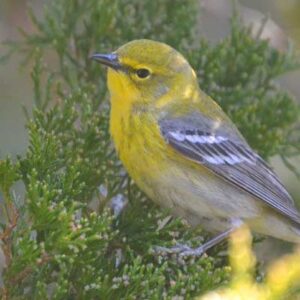 Southwest Ohio is a great place to see warblers. The region’s diverse habitats, including forests, woodlands, and meadows, provide a home for a variety of these beautiful birds.
Southwest Ohio is a great place to see warblers. The region’s diverse habitats, including forests, woodlands, and meadows, provide a home for a variety of these beautiful birds.
Warblers are small, songbirds that are known for their bright plumage and melodious songs. They are found in North America, South America, and Europe. Warblers typically eat insects, and they build their nests in trees or shrubs.
There are over 50 species of warblers that can be found in North America. Some of the most common warblers in southwest Ohio include:
- Black-throated blue warbler
- Yellow warbler
- Chestnut-sided warbler
- Prothonotary warbler
- Northern parula warbler
- Magnolia warbler
- Cerulean warbler
- Blackburnian warbler
- Swainson’s warbler
- Worm-eating warbler
Warblers are an important part of the ecosystem. They help to control insect populations, and they also provide food for other animals, such as birds of prey and mammals.
Warblers are declining in numbers due to habitat loss and fragmentation. They are also affected by climate change, which is causing changes in their breeding and migration patterns.
There are a number of things that can be done to help warblers. One of the most important things is to protect their habitat. This can be done by planting native plants, creating or maintaining woodlands and meadows, and avoiding the use of pesticides.
You can also help warblers by becoming a citizen scientist. There are a number of programs that allow you to report your observations of warblers. This information can be used by scientists to track the population status of warblers and to identify areas that need protection.
Warblers are beautiful and important birds. By taking steps to protect their habitat and by becoming a citizen scientist, you can help to ensure their survival.
Here are some additional tips for attracting warblers to your backyard:
- Plant native plants that provide food and shelter for warblers. Some good choices include:
- Nectar-rich flowers, such as azalea, rhododendron, and columbine
- Berries, such as holly, dogwood, and serviceberry
- Dense shrubs, such as viburnum, elderberry, and spicebush
- Provide water for drinking and bathing. A birdbath or shallow dish of water will be a welcome addition to your backyard.
- Avoid using pesticides and herbicides in your yard. These chemicals can harm warblers and other wildlife.
- If you have a birdhouse, make sure it is the right size and type for warblers. Warblers typically nest in small, enclosed cavities.
- Be patient and quiet. Warblers are easily startled, so be sure to move slowly and quietly when you are in your backyard.
With a little effort, you can attract warblers to your backyard and enjoy their beauty and song all season long.
